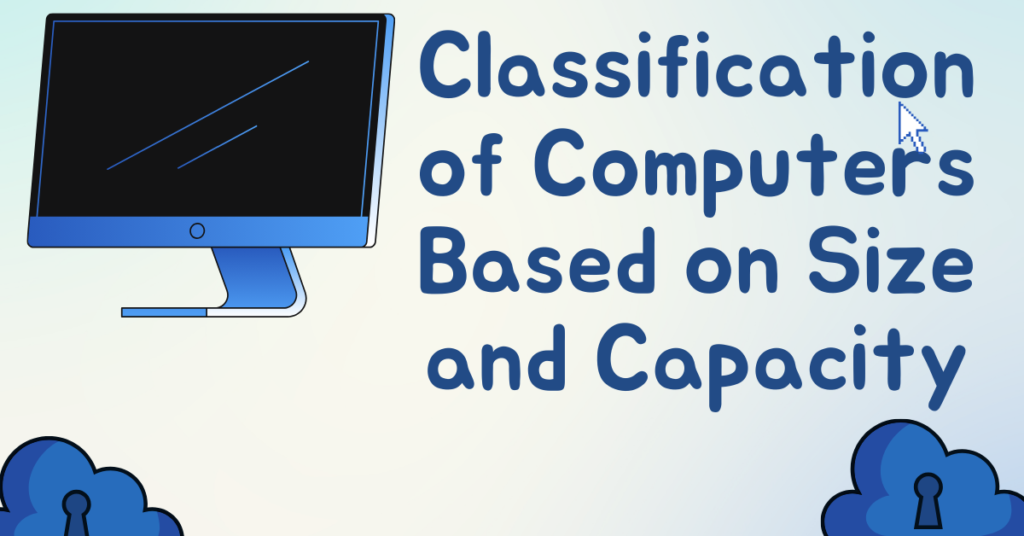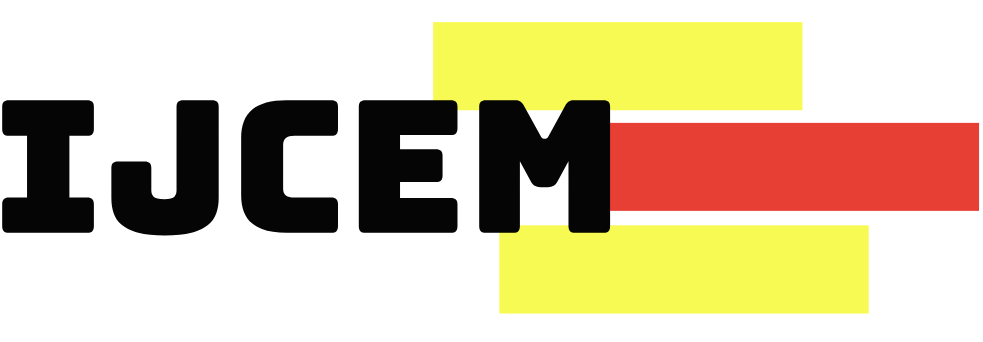Classification of Computers Based on Size and Capacity
A computer is an electronic machine that takes in raw data, processes it as per instructions, and gives useful information. Based on size and data handling ability, computers are divided into different types. Knowing these types helps in picking the right computer for personal, business, or research needs.
Classification of Computers by Size
1. Supercomputers
Supercomputers are the fastest and most powerful computers in the world. They are huge and very expensive. They are mainly used for scientific research, space studies, weather forecasting, and nuclear experiments. Supercomputers can process a lot of data at lightning speed.
Where are Supercomputers Used?
- Space exploration and satellite control
- Predicting weather and natural disasters
- Nuclear tests and scientific simulations
- Complex research in science and technology
Features of Supercomputers:
- Use Artificial Intelligence (AI) for fast data processing
- Extremely fast and powerful
- Very large in size and need special cooling systems
- Highly expensive and only big organizations can afford them
Examples:
- Fugaku (Japan)
- IBM Blue Gene
- Cray XT5

2. Mainframe Computers
Mainframe computers are also powerful but not as fast as supercomputers. They are used by banks, government offices, and big companies to handle large amounts of data. Mainframes can manage hundreds of users at the same time and are known for their reliability.
Where are Mainframe Computers Used?
- Banks for managing transactions
- Universities for keeping student records
- Insurance companies for handling policies
- Government offices for storing public records
Features of Mainframe Computers:
- Can store and process a lot of data
- Run multiple operating systems at the same time
- Have many powerful processors (CPUs)
- Very reliable and secure for handling sensitive data
Examples:
- IBM Z Series
- Unisys ClearPath
3. Minicomputers
Minicomputers, also known as midrange computers, are smaller than mainframes but still powerful. They are used by medium-sized businesses for tasks like managing production or handling office data. They support multiple users and are cheaper than mainframes.
Where are Minicomputers Used?
- Small industries and factories
- Educational institutions for managing data
- Offices for handling multiple tasks
Features of Minicomputers:
- Smaller in size compared to supercomputers and mainframes
- Cheaper and more affordable for small businesses
- Can perform multiple tasks at the same time
- Suitable for several users working together
Examples:
- DEC PDP-11
- VAX Systems
4. Microcomputers
Microcomputers are the most common type of computers, also known as personal computers (PCs). These are small, affordable, and used by individuals for personal work like browsing, studying, or entertainment. Laptops, desktops, and even smartphones are microcomputers.
Where are Microcomputers Used?
- Homes for personal use like internet browsing or gaming
- Schools and colleges for educational purposes
- Offices for creating documents, emails, and more
Features of Microcomputers:
- Compact and easy to carry
- Affordable for personal use
- Limited processing power compared to larger computers
- Designed for single-user applications
- Easy to use with simple interfaces
Examples:
- Desktop PCs
- Laptops
- Smartphones
- Tablets
- Raspberry Pi
Classification of Computers by Data Handling Capacity
1. Analog Computers
Analog computers process continuous data like temperature, speed, or pressure. They work with real-world physical quantities. These were the first type of computers used for scientific calculations before digital computers became popular.
Where are Analog Computers Used?
- Measuring temperature and pressure
- Controlling industrial machines
- Simulating flight and engineering models
Examples:
- Analog thermometers
- Speedometers in vehicles
- Flight simulators for pilot training
2. Digital Computers
Digital computers process data in binary form, using 0s and 1s. They are the most common type of computers today and are used in almost every field. From personal laptops to large servers, digital computers handle both numbers and text.
Where are Digital Computers Used?
- Personal and office use for documents, emails, and browsing
- Running software applications for various tasks
- Data storage and processing in industries
Features of Digital Computers:
- Work with binary code (0 and 1)
- High accuracy and speed in processing data
- Can handle both numbers and non-numeric data
- Widely used in homes, schools, and businesses
Examples:
- Personal computers
- Laptops
- Smartphones
- Servers in data centers
3. Hybrid Computers
Hybrid computers are a mix of analog and digital computers. They combine the speed of analog with the accuracy of digital systems. These are used in special applications where both types of data are needed.
Where are Hybrid Computers Used?
- Hospitals for patient monitoring systems
- Factories for controlling machines and production lines
- Scientific research for real-time data analysis
Features of Hybrid Computers:
- Fast data processing like analog computers
- Accurate and reliable like digital computers
- Can handle both continuous and discrete data
Examples:
- Patient monitoring systems in hospitals
- Industrial control systems in factories
Summary
Computers are classified based on their size and how they handle data. By size, we have supercomputers, mainframes, minicomputers, and microcomputers. By data handling, we have analog, digital, and hybrid computers. Each type of computer is used for different purposes, from personal tasks to complex scientific research and business operations. Understanding these types helps in choosing the right computer for the right job.
